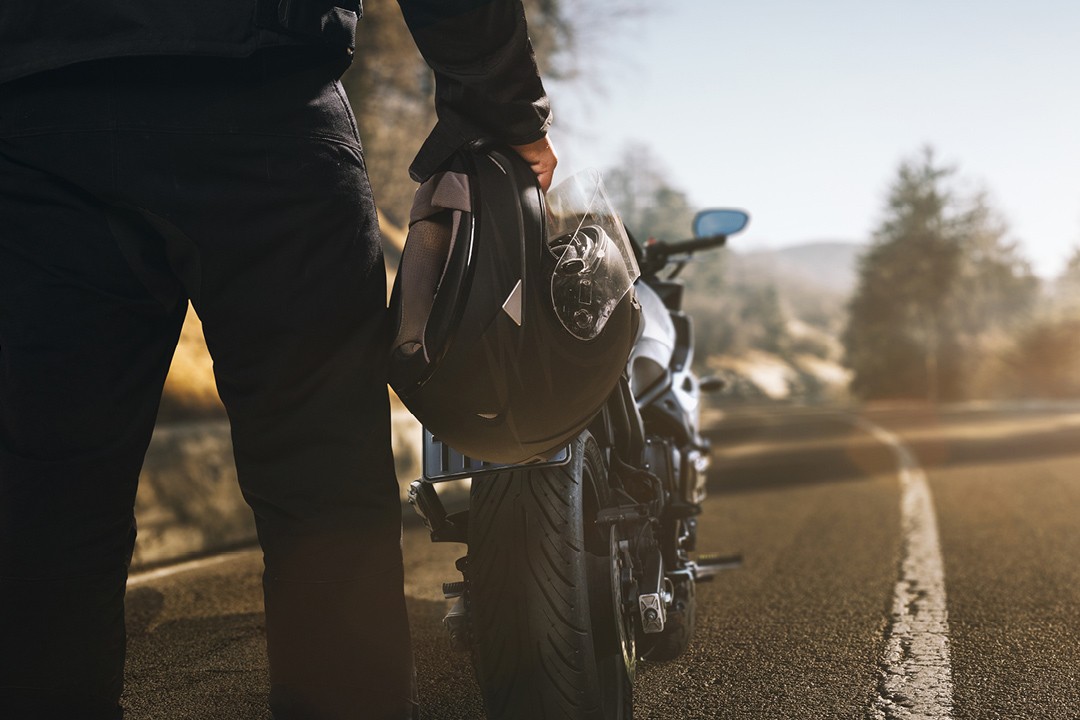Learning to ride a motorcycle can seem daunting, but it’s often easier than perceived. Motorcycles aren’t overly complex machines requiring expert skills. They’re essentially bicycles with engines. This guide provides six easy steps to get you started, addressing the question: Is Learning To Ride A Motorcycle Hard?
Gearing Up and Choosing the Right Bike
Before you even start the engine, safety and choosing the right motorcycle are paramount.
Gear Up for Safety
Prioritize safety by wearing appropriate gear: a helmet, gloves, sturdy boots covering your ankles, and protective motorcycle pants and jacket. Kevlar or Dyneema-reinforced clothing offers excellent protection for beginners.
Choosing Your First Motorcycle
Opt for a lighter motorcycle (250-650cc) that’s easy to handle. The make and model are less important than finding a bike that feels comfortable. Can you comfortably place both feet on the ground? Can you easily maneuver the bike on and off the stand? A comfortable, upright riding position, common in street, dirt, and adventure bikes, is generally recommended for new riders. Practice moving the bike around to get a feel for its weight and balance.
Mastering the Controls: Brakes, Clutch, and Throttle
Understanding the controls is crucial for a smooth and safe riding experience.
Learning to Brake
Familiarize yourself with the brakes: the right foot pedal controls the rear brake, and the right handlebar lever controls the front brake. Practice using both brakes simultaneously, applying gradual pressure to avoid locking the wheels. Start with the bike stationary, rolling it forward slightly and applying the brakes gently to develop a feel for their responsiveness.
Clutch and Throttle Coordination
Mastering the clutch and throttle is key to smooth gear changes. Most motorcycles have five gears. To start, pull in the clutch lever, engage first gear, and gently roll on the throttle while simultaneously releasing the clutch. As you gain speed, pull the clutch lever in fully, release the throttle, and shift up to the next gear. Downshift to slow down, eventually reaching first gear and neutral when stopped. Practice until this becomes second nature.
Turning and Practicing
Once you’re comfortable with the basic controls, you can begin practicing turning and honing your skills.
Mastering Turns
Turning involves more than just steering. Lean into turns along with the bike, maintaining a steady throttle and looking in the direction you want to go. Avoid fixating on the front tire, as this can lead to imbalance and potential accidents.
Practice Makes Perfect
After obtaining your motorcycle license, practice riding in controlled environments like quiet, two-lane roads. Gradually progress to more challenging situations as your confidence and skills improve. Consistent practice is essential for developing muscle memory and becoming a proficient rider.
Learning Resources and Safety Tips
Professional training and ongoing learning are essential for safe riding.
Where to Learn
Enroll in a Motorcycle Safety Foundation (MSF) course for professional instruction in a controlled environment. These courses provide comprehensive training and prepare you for the licensing test. Manufacturers like Harley-Davidson and Can-Am also offer beginner riding courses.
Safe Riding Practices
Always wear protective gear, ride defensively, and be aware of other vehicles. Avoid riding in challenging conditions like darkness or heavy rain until you’ve gained significant experience. Start with shorter rides to avoid fatigue and gradually increase distance as your endurance improves.
Riding in the Rain and Motorcycle Security
Specific considerations for riding in wet conditions and protecting your investment.
Riding in Wet Conditions
Reduce speed by at least 20% and increase braking distance by 30% in wet conditions. Wear waterproof gear to stay dry and comfortable.
Motorcycle Security
Protect your motorcycle from theft with a GPS tracker. These devices provide real-time alerts if your bike is moved and can assist in recovery if stolen.
Conclusion
So, is learning to ride a motorcycle hard? While it requires dedication and practice, it’s achievable with the right approach. By following these steps, prioritizing safety, and seeking professional training, you can confidently embark on your motorcycling journey. Remember to practice regularly, ride defensively, and enjoy the freedom of the open road.
